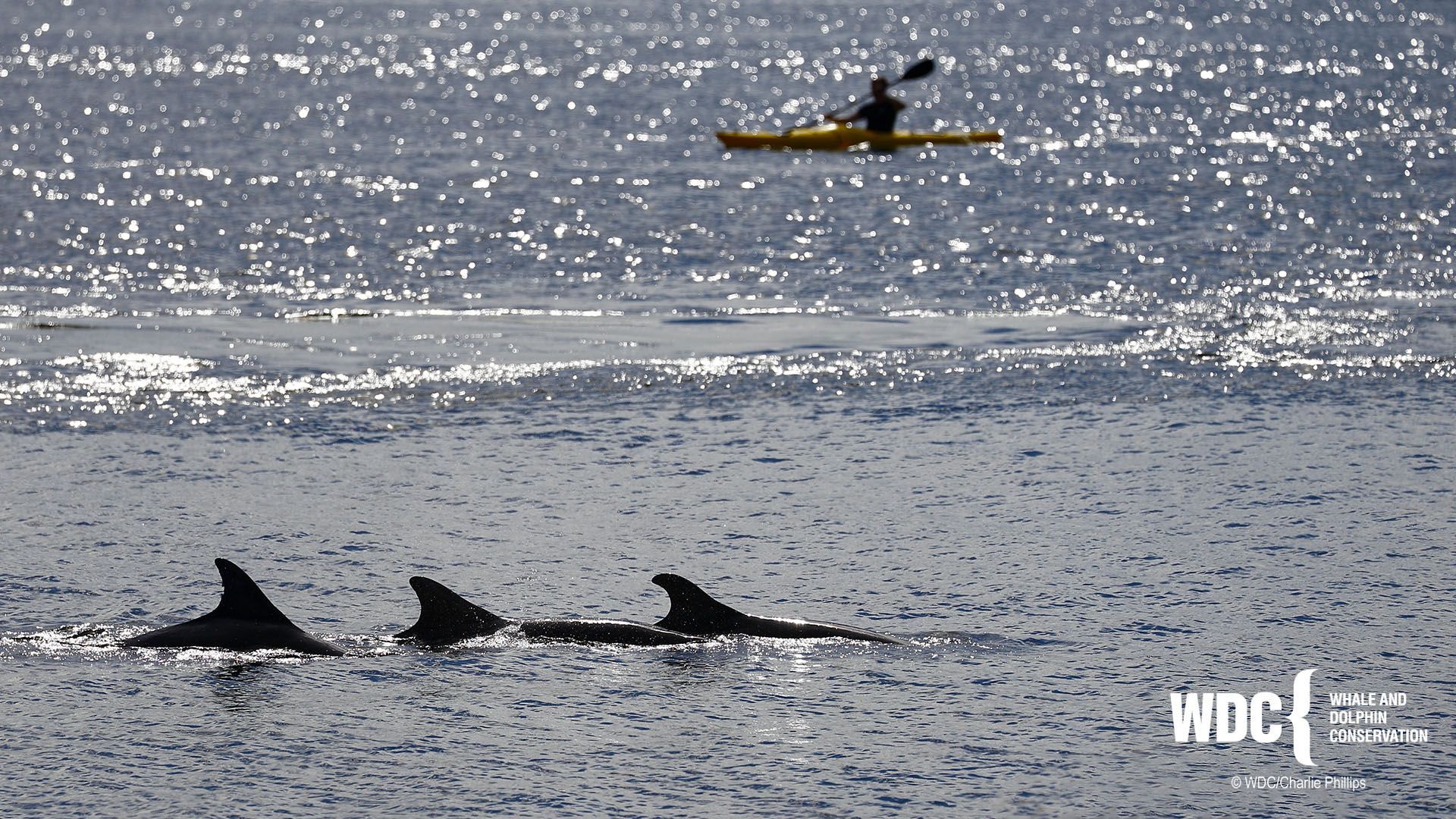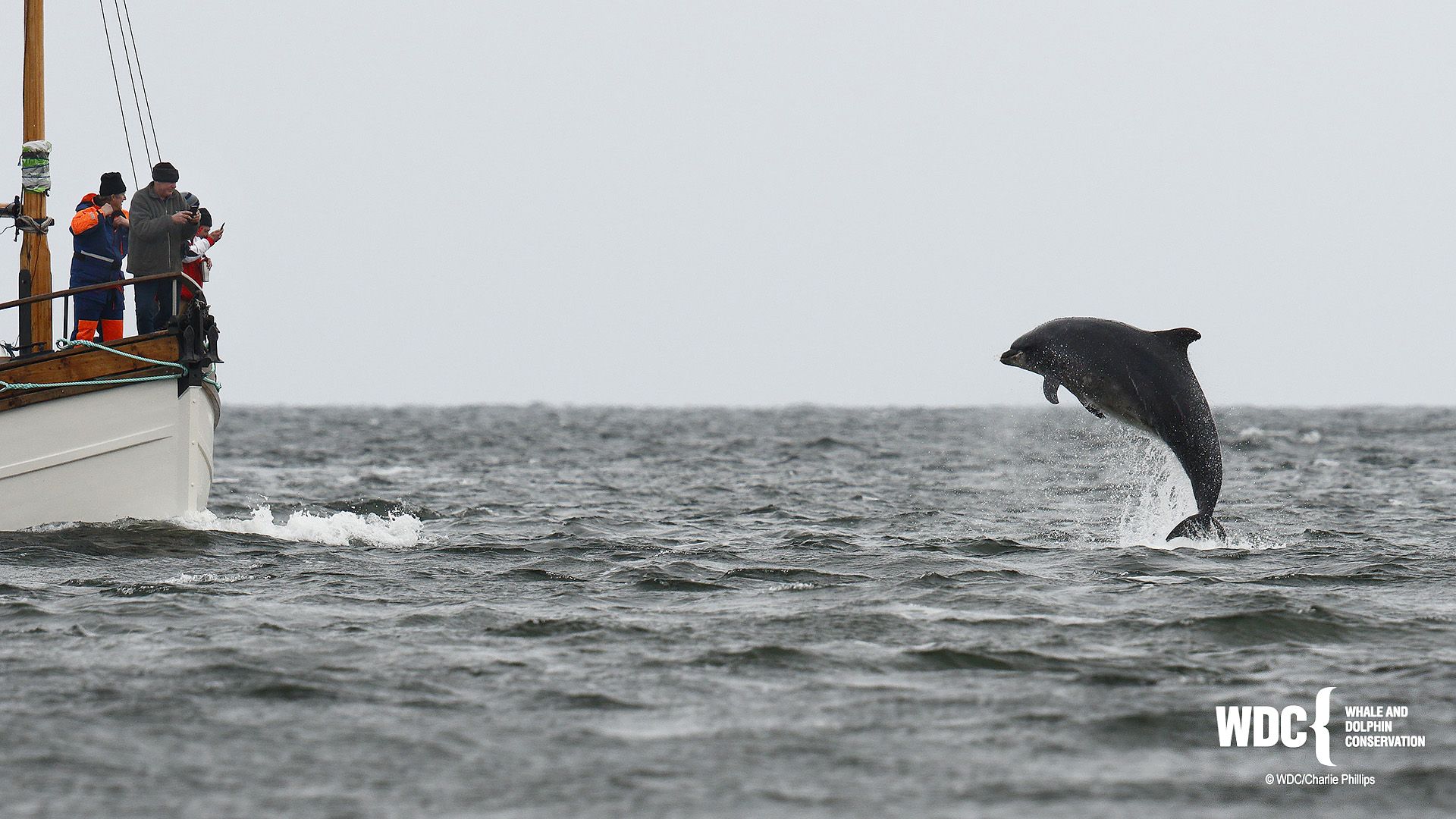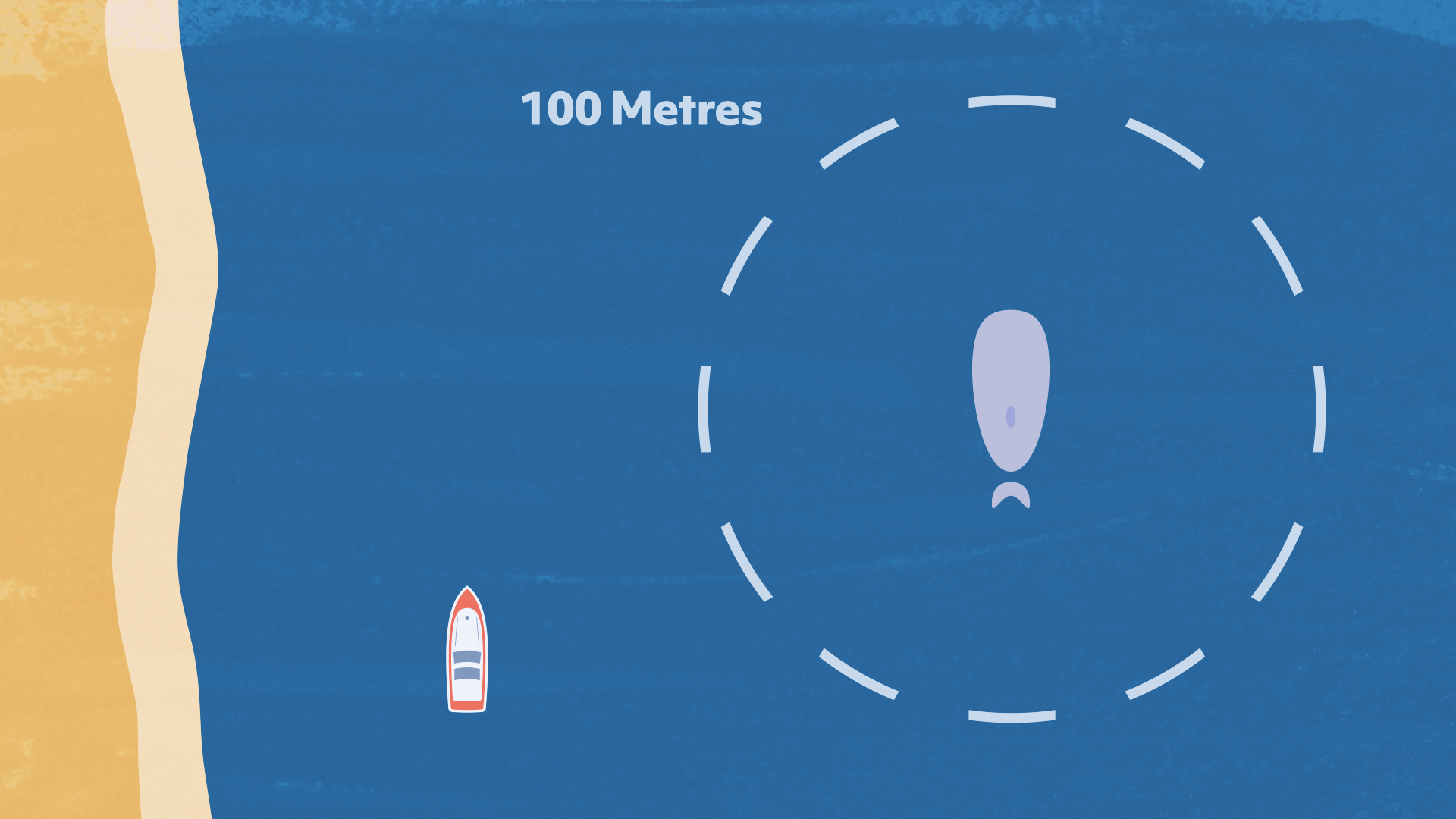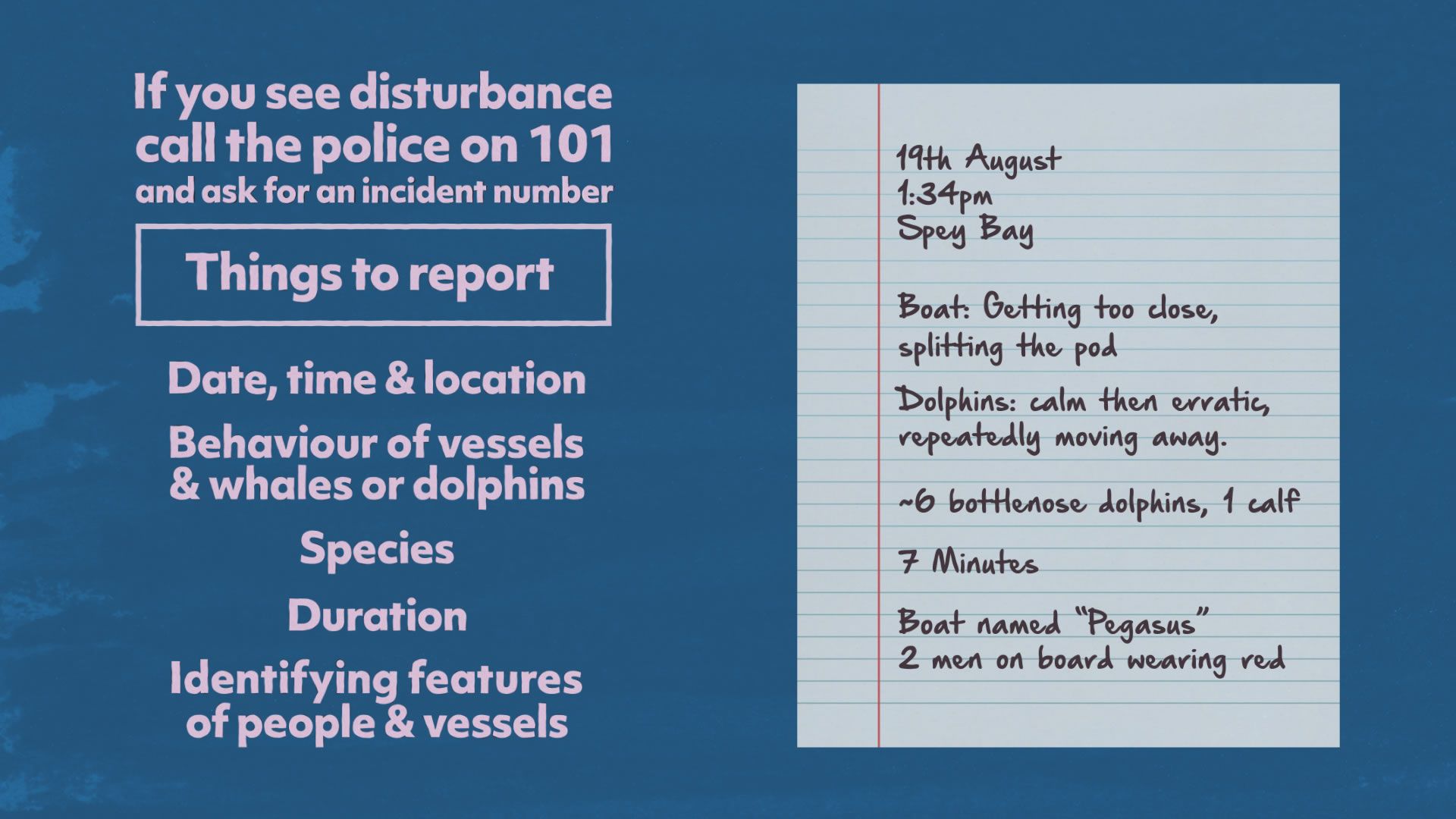The coastal waters of Scotland are home to several marine mammal species like bottlenose dolphins, harbour porpoise and seals. It’s more common than you think to encounter them and, working for WDC on our Shorewatch project, I am fortunate enough to record numerous sightings of whales, dolphins and porpoises around the Scottish coastline. As a keen paddleboarder I have also had several encounters with dolphins, porpoise and seals while on the water.

Photo: Charlie Phillips/WDC
Watching whales and dolphins wild and free is an incredible experience and provides wonderful memories that will stay with you for years. It can even shape a young person’s life. I still remember my first cetacean sighting at 14 years old, from the Isle of Skye – it was a minke whale – and that day I decided I wanted to be involved in marine conservation.
Each year more and more people are recognising that our marine environment is a place to be celebrated and enjoyed, but this also leads to marine wildlife having to share their homes with more people, which sometimes can lead to negative impacts on the creatures we love.

Photo: Charlie Phillips/WDC
Disturbance to whales, dolphins, porpoise, and seals from watercrafts is a serious threat to their survival. Only this year a common dolphin was killed after a boat strike, while hundreds of seals have undergone harmful injuries after being driven from their resting sites. As several of our marine species live in coastal waters, there is a high likelihood that we may encounter them when out on the water. Without the right education it can be too easy to cause a disturbance. Disturbance does not always result in death or physical injury, it can alter natural behaviours like communication, resting, feeding, breeding and soliciting, and can drive marine wildlife away from important areas used as feeding grounds or nurseries. Whales, dolphins, and porpoises need to feed, rest, socialise and reproduce to stay healthy and to keep their populations strong. If we get too close, we can disrupt their natural behaviours and unwittingly cause changes to an individual’s breathing, hamper their ability to feed, or stop them getting the rest that they need. Mothers with calves are particularly vulnerable.
You might think it’s just noisy boats and jet skis that are a problem, but kayakers and paddle-boarders can disturb dolphins too, and it’s important that we all know how to behave around marine wildlife, so we can ensure their and our safety. That’s why WDC launched our #RudeToIntrude campaign to raise awareness of marine mammal disturbance, what it looks like, and how to avoid causing a disturbance and how to report any illegal activities.
We all need our personal space – so do whale and dolphins.
Following this advice will help you to remain within the law and reduce the risk of you disturbing whales and dolphins.
- Keep your distance. Avoid getting too close, especially if calves are present.
- Approach carefully from behind and to the side, make sure you are aware of best practice.
- Three is a crowd – there should never be more than two watercrafts within the 300 metre ‘caution zone’
- Don’t overstay your welcome – 15 minutes is enough.
- Avoid repeated disturbance; consider staying away if the wildlife has already spent a prolonged period with vessels nearby.

Image: WDC
It’s #RudeToIntrude. To avoid disturbing wildlife, DO NOT:
- Make sudden changes to speed and direction
- Approach from directly in front or behind
- Drive between or scatter groups, especially mothers and calves
- Chase or repeatedly approach individuals
- Box them in – take care not to trap individuals between your vessel and other vessels or the shore
- Swim with them or try to touch or feed them.
Disturbance of whales and dolphins is an offence, whether it is intentional or not. Reporting reckless or intentional disturbance will help protect whales and dolphins, enabling everyone to enjoy our waters.
- If you see someone disturbing dolphins, porpoises or whales, do not approach them yourself. Do report them to the police by calling 101.
- Tell the operator that you are reporting a wildlife crime and ask for an incident number to ensure that reports can be tracked.
- Report the incident, letting them know:
- the date, time and location of the disturbance
- the behaviour of any vessels and of the whales and dolphins before, during and after the event
- if possible, the species involved
- the duration of the interaction
- any identifying features of the people or vessel involved, such as the boat name and the clothes worn.
- If possible, take photographic or video evidence of the disturbance. Photos and video of behaviour before and after the disturbance or from different angles can also be very helpful!

Image: WDC
Watch the full #RudeToIntrude video!
Katie Dyke is the Shorewatch Project Coordinator for Whale and Dolphin Conservation

Photo: Al Dennis
